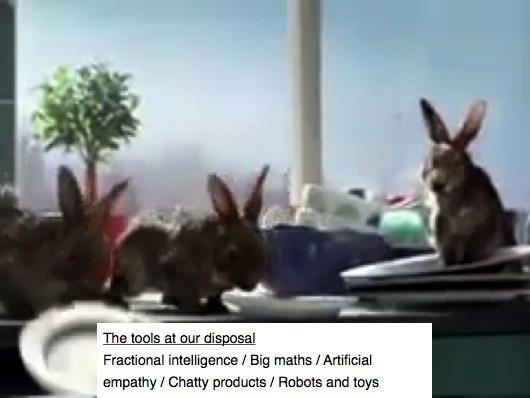Botworld
First, the possibility of it all.
Just as our homes filled with appliances with fractional power motors in the early 20th century, our homes – and pockets and workplaces – will fill with appliances with a tiny amount of intelligence in these first decades of the 21st century. They’ll have faces, and communicate with us — not much, but some. It’s already started. There’s already more Zhu Zhu Hamster and The Sims in the Argos catalog than Lego.
It’ll happen partially because it’s now technologically cheap and possible, and partially because kids are growing up with artificial intelligence, and they’ll expect their products to be smart, not dumb.
To be relevant, products and services will have to be chatty, and a little bit smart. And, if you’re a designer or a technologist, you have these tools to work with:
- fractional intelligence: either done with computer programs, or having someone pretend to be a robot
- big maths: it’s now possible to cheaply do complicated calculations
- artificial empathy: stick a face on something, and you’ll imagine it has a mind and treat it differently
- chatty products: your products can chat to each other and to you through simple services like Twitter
- robotics and toys: artificial intelligences and humans can travel into each other’s worlds
